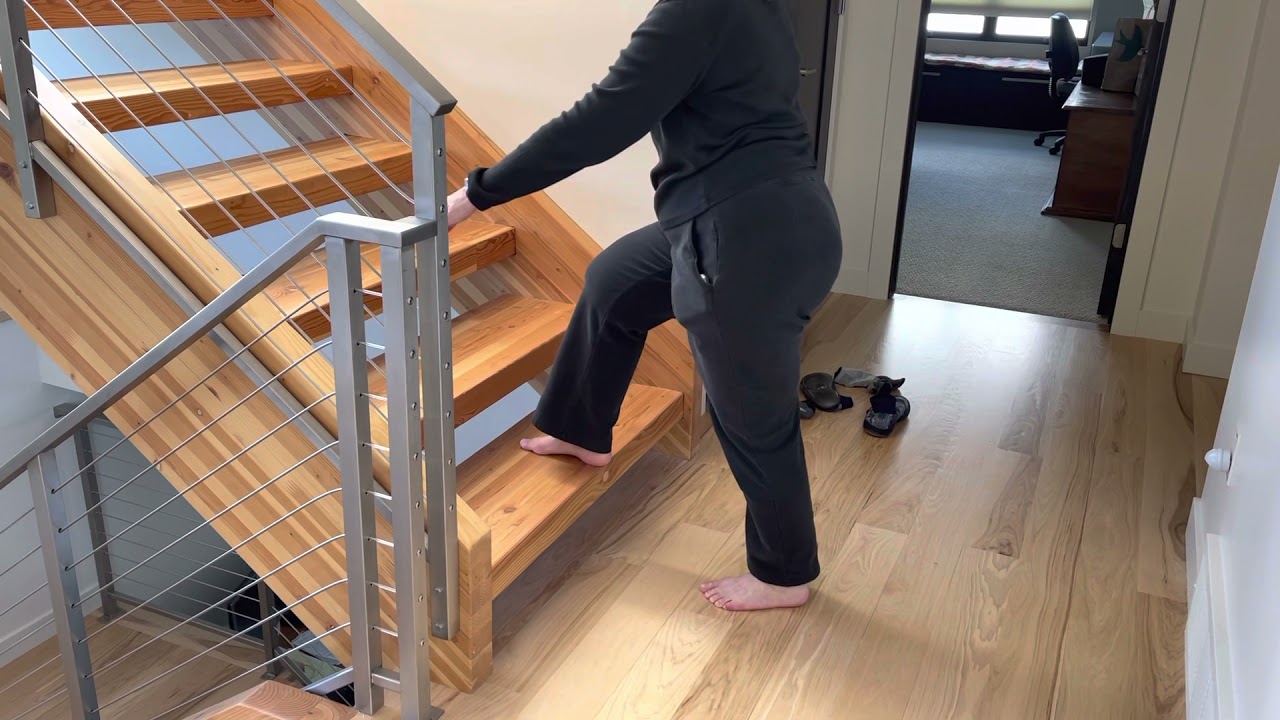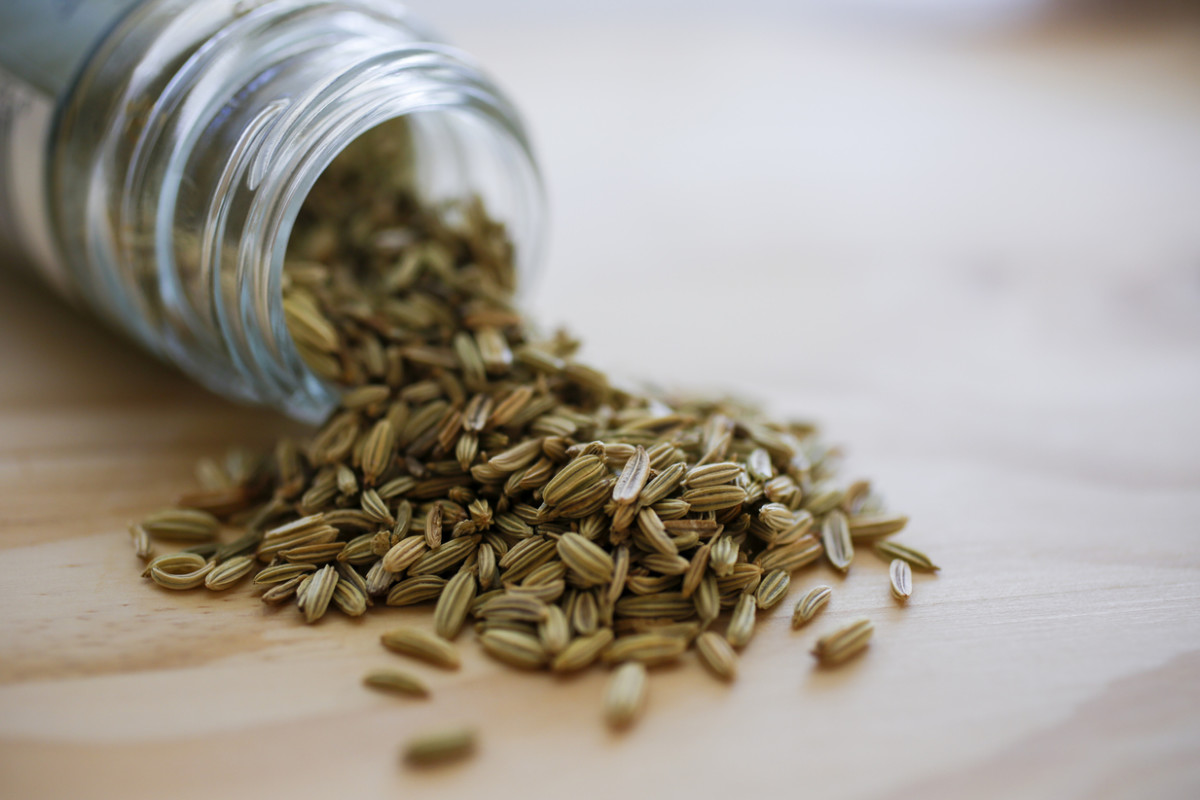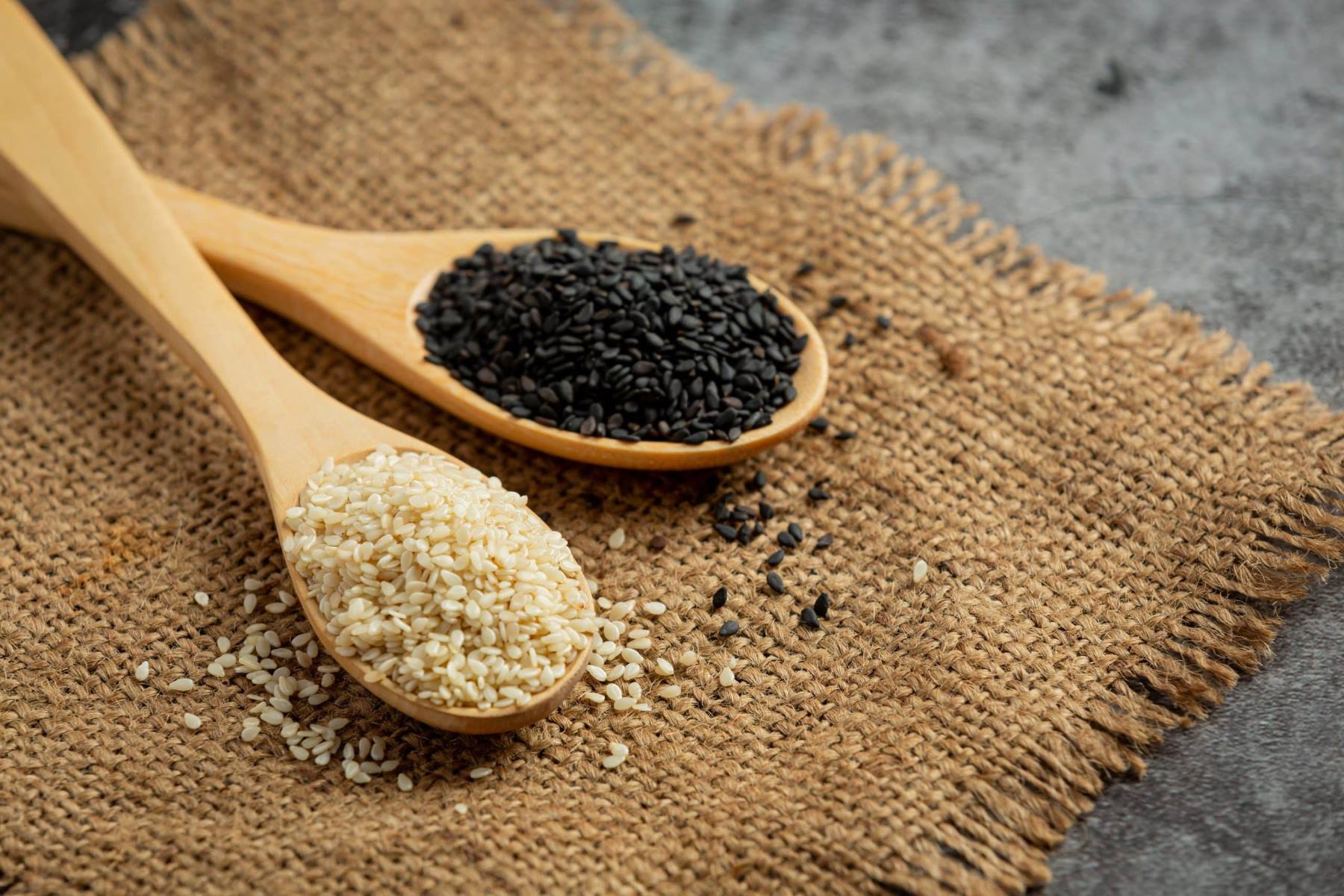

Articles
What Are The Benefits Of Climbing Stairs
Modified: October 20, 2024
Looking for articles on what doing stairs can help with? Discover the benefits of incorporating stair workouts into your fitness routine and improve your strength and cardiovascular health.
(Many of the links in this article redirect to a specific reviewed product. Your purchase of these products through affiliate links helps to generate commission for Storables.com, at no extra cost. Learn more)
Introduction
When it comes to staying active and maintaining good health, many people think of traditional exercises such as running, cycling, or hitting the gym. However, sometimes we overlook the simplest and most accessible forms of exercise right in front of us, such as climbing stairs. Whether it’s in our homes, at work, or in public spaces, stairs provide a convenient and effective way to get our heart rate up and improve our overall fitness.
In this article, we will explore the numerous benefits that come with incorporating stair climbing into our daily routine. From physical health advantages to mental and emotional well-being, doing stairs can make a significant impact on our overall quality of life. So, let’s take a step in the right direction and discover just how beneficial doing stairs can be.
Key Takeaways:
- Stair climbing offers a convenient, cost-effective, and time-efficient way to improve cardiovascular fitness, tone leg muscles, manage weight, and enhance joint health. It’s a practical exercise accessible to everyone, anytime, anywhere.
- Engaging in stair climbing not only benefits physical health but also provides powerful stress relief, mood enhancement, and increased energy levels. It’s a simple yet effective way to boost overall well-being and vitality.
Read more: Where To Climb Stairs Near Me
Benefits of Doing Stairs
When it comes to exercise, consistency is key. The great thing about incorporating stair climbing into your routine is that it’s easily accessible and can be done almost anywhere. Whether you have a set of stairs at home, at your workplace, or even in public spaces like parks or stadiums, you can take advantage of the physical and mental benefits that come with this simple yet effective form of exercise.
Let’s dive into the various benefits of doing stairs:
- Physical Health Benefits: One of the main advantages of stair climbing is its ability to improve cardiovascular fitness. Additionally, it helps strengthen and tone your leg muscles, burns calories and aids in weight loss, and promotes joint health and mobility.
- Mental and Emotional Benefits: Stair climbing can be a powerful stress reliever, as it allows you to focus on your physical movement and clear your mind. It also stimulates the release of endorphins, the feel-good hormones that can boost your mood and increase your energy levels.
- Convenience and Practicality: Unlike expensive gym memberships or specialized equipment, stairs are readily available and don’t require any additional expenses. You can easily incorporate stair climbing into your daily routine, whether it’s by taking the stairs at work or using your own staircase at home.
Now, let’s explore each benefit in more detail:
Physical Health Benefits
Stair climbing is a powerful exercise that offers numerous physical health benefits. By incorporating this activity into your routine, you can improve your cardiovascular fitness, strengthen and tone your leg muscles, burn calories and aid in weight loss, and promote joint health and mobility.
Cardiovascular Fitness: Taking the stairs requires you to engage large muscle groups, such as your legs and buttocks, in a continuous movement. This increases your heart rate and improves your cardiovascular endurance over time. Regular stair climbing can strengthen your heart and lungs, leading to better overall cardiovascular fitness.
Leg Strength and Toning: As you climb stairs, your leg muscles, including your quadriceps, hamstrings, calves, and glutes, are actively engaged. This repetitive exercise helps to build strength and tone these muscles, leading to more defined and sculpted legs.
Burn Calories and Lose Weight: Stair climbing is a highly effective calorie-burning exercise. The intensity of the activity and the engagement of multiple muscle groups result in a higher calorie expenditure compared to other forms of exercise. Regular stair climbing can contribute to weight loss and aid in maintaining a healthy body weight.
Joint Health and Mobility: Stair climbing is a weight-bearing exercise that puts stress on your bones, which can help maintain or increase bone density. Additionally, the movement involved in stair climbing helps to promote joint mobility and flexibility. This can be particularly beneficial for individuals with arthritis or those looking to prevent joint stiffness and improve overall joint health.
By including stair climbing as a regular part of your exercise routine, you can reap the numerous physical benefits it offers. Not only will it improve your overall fitness, but it also provides a practical and convenient way to stay active and maintain your health.
Cardiovascular Fitness
Stair climbing is an excellent exercise for improving cardiovascular fitness. The continuous movement and engagement of large muscle groups make it a highly effective aerobic activity that gets your heart pumping and your lungs working harder. Here’s a closer look at how stair climbing can benefit your cardiovascular health:
Elevated Heart Rate: One of the key factors in improving cardiovascular fitness is getting your heart rate up and keeping it elevated for a sustained period. When you climb stairs, your heart has to work harder to pump oxygen-rich blood to your muscles, which increases your heart rate. This elevated heart rate strengthens your heart muscle and improves its efficiency over time.
Improved Endurance: Regular stair climbing can help increase your endurance, allowing you to engage in other physical activities for longer periods without feeling fatigued. As your cardiovascular fitness improves, your body becomes more efficient at utilizing oxygen, allowing you to sustain higher levels of physical exertion without running out of breath.
Decreased Risk of Cardiovascular Diseases: Engaging in regular stair climbing can reduce the risk of developing cardiovascular diseases such as heart disease, high blood pressure, and stroke. By improving cardiovascular fitness, you can lower your blood pressure, reduce bad cholesterol levels, and maintain a healthier cardiovascular system overall.
Weight Management: Stair climbing is a calorie-burning activity that can contribute to weight management and maintenance. As a cardiovascular exercise, it helps burn calories and boost your metabolism, making it an effective component of a weight loss or weight maintenance plan.
It is important to note that stair climbing can be adapted to your fitness level. If you are just starting out, begin with a few flights of stairs and gradually increase the challenge as your fitness improves. Incorporating stair climbing into your routine several times a week can have a profound impact on your cardiovascular health and overall fitness.
Leg Strength and Toning
Stair climbing is a fantastic way to build strength and tone the muscles in your legs. The repetitive movement of climbing stairs engages various muscle groups, including your quadriceps, hamstrings, calves, and glutes. Here’s a closer look at how stair climbing can benefit leg strength and toning:
Quadriceps: The quadriceps, located at the front of your thighs, play a key role in knee extension and leg stability. As you climb stairs, the quadriceps contract and work to straighten your knees with each step. This constant contraction helps to strengthen and tone these muscles, leading to improved leg strength and definition.
Hamstrings: The hamstrings, located at the back of your thighs, assist in knee flexion and hip extension. When you climb stairs, the hamstrings engage to control the movement of your legs and support your bodyweight. Working these muscles through stair climbing can help develop hamstring strength and contribute to a more balanced and well-rounded lower body.
Calves: The calf muscles, including the gastrocnemius and soleus, are located at the back of your lower legs. As you climb stairs, the calves are actively engaged to push your body upward and control your descent. The repetitive nature of stair climbing helps to strengthen and tone these muscles, giving your calves a more sculpted appearance.
Glutes: The gluteal muscles, consisting of the gluteus maximus, gluteus medius, and gluteus minimus, are responsible for hip extension and stabilization. When you climb stairs, your glutes are responsible for pushing your body forward and providing stability as you step up. Regular stair climbing can target and strengthen these muscles, helping to lift and tone the glutes.
Stair climbing offers a comprehensive workout for your leg muscles and can lead to improved leg strength, endurance, and muscle tone. As you consistently incorporate stair climbing into your routine, you may begin to notice increased definition and a more sculpted appearance in your leg muscles.
Read more: At What Age Should You Stop Climbing Stairs
Burn Calories and Lose Weight
If you’re looking to shed some pounds or maintain a healthy weight, incorporating stair climbing into your fitness routine can be a game-changer. Stair climbing is a highly effective calorie-burning exercise that can contribute to weight loss and aid in weight management. Here’s why:
High Calorie Expenditure: Stair climbing is a dynamic, whole-body exercise that engages multiple muscle groups. This means that it requires more energy and burns more calories compared to traditional exercises like walking or jogging on flat ground. The intensity of climbing stairs can result in a greater calorie expenditure per minute, helping you burn more calories in a shorter amount of time.
Increased Metabolism: Stair climbing not only burns calories during the exercise session but also has an impact on your metabolism afterward. It has been shown that high-intensity exercises like stair climbing can elevate your metabolism, leading to an increased calorie burn for several hours post-workout. This phenomenon, known as the afterburn effect, enables you to continue burning calories even after you’ve finished climbing the stairs.
Whole-Body Engagement: Unlike exercises that mainly target specific areas of the body, stair climbing engages a variety of muscle groups simultaneously. The continuous movement of climbing stairs targets your leg muscles, core, and even your upper body to some extent. By involving multiple muscle groups, stair climbing requires more energy and burns more calories compared to exercises that focus on isolated muscle groups.
Accessible and Time-Efficient: One of the greatest advantages of stair climbing is its accessibility and time-efficiency. Stairs are usually readily available, whether it’s in your office building, at home, or at a local park. You can incorporate stair climbing into your daily routine without needing any special equipment or a gym membership. Additionally, a quick stair climbing session can provide a powerful workout in a short amount of time, making it suitable for those with busy schedules.
When combined with a balanced diet and overall healthy lifestyle, incorporating stair climbing into your routine can be an effective tool for weight management and achieving your fitness goals. Whether your aim is to lose weight, maintain your current weight, or improve your overall fitness, stair climbing can be a valuable addition to your exercise regimen.
Joint Health and Mobility
Stair climbing is not only a great form of exercise for cardiovascular fitness and leg strength, but it also provides significant benefits to joint health and mobility. The repetitive movement involved in climbing stairs helps to promote flexibility, improve range of motion, and maintain the health of your joints. Here’s a closer look at how stair climbing can benefit your joints:
Weight-Bearing Exercise: Stair climbing is a weight-bearing exercise, which means that your joints bear the weight of your body as you climb. This weight-bearing nature of the activity helps to strengthen the bones and joints, promoting joint health and preventing conditions such as osteoporosis.
Increased Range of Motion: When you climb stairs, you move your joints through a full range of motion. This repeated flexion and extension of the knees, hips, and ankles help to improve joint flexibility and maintain a healthy range of motion. By regularly engaging in stair climbing, you can prevent joint stiffness and improve overall joint mobility.
Joint Stability: Climbing stairs requires balance and stability, which in turn helps to improve joint stability. The movement involved in stair climbing engages the muscles surrounding the joints, such as the quadriceps, hamstrings, and glutes, which provide support and stability. Strong and stable joints are less prone to injury and can better withstand the demands of daily activities.
Low-Impact Exercise: Stair climbing is a low-impact exercise, meaning that it puts less stress on the joints compared to high-impact activities like running or jumping. This makes it a suitable option for individuals with joint conditions or those who are recovering from injuries. Stair climbing offers a way to improve joint health and mobility without causing excessive strain or discomfort.
Whether you’re young or older, incorporating stair climbing into your routine can help maintain the health, flexibility, and mobility of your joints. By engaging in this low-impact activity regularly, you can pave the way for better joint health and reduce the risk of joint-related issues in the long run.
Doing stairs helps with cardiovascular fitness, leg strength, and calorie burning. To maximize the benefits, try incorporating stair climbing into your regular exercise routine.
Mental and Emotional Benefits
Stair climbing not only has physical benefits but also offers numerous mental and emotional advantages. Engaging in this exercise can be a powerful tool for stress relief, endorphin release, improved mood, and increased energy levels. Here’s a closer look at the mental and emotional benefits of stair climbing:
Stress Relief: Climbing stairs provides an opportunity to focus on your physical movement and clear your mind from daily stressors. The rhythmic action of climbing can be meditative, allowing you to release tension and promote a sense of calmness. This dedicated time for yourself can help reduce stress levels and improve overall mental well-being.
Endorphin Release: Stair climbing, like any aerobic exercise, stimulates the release of endorphins in your body. Endorphins are natural chemicals that act as mood lifters and pain relievers. These feel-good hormones can create a sense of euphoria and promote a positive outlook, leaving you feeling happier and more content after a stair climbing session.
Improved Mood and Energy Levels: Regularly engaging in stair climbing can have a significant impact on your mood and energy levels. Physical activity, especially aerobic exercises like stair climbing, has been shown to boost energy, reduce feelings of fatigue, and improve overall mental clarity. These benefits can enhance your productivity, focus, and overall quality of life.
Self-Confidence: Accomplishing a stair climbing workout, whether it’s conquering a long flight of stairs or reaching a personal goal, can boost your self-confidence. As you see progress in your fitness level and feel stronger, your self-esteem can improve. This newfound confidence can extend beyond your exercise routine and positively impact other areas of your life as well.
By incorporating stair climbing into your routine, you can experience significant mental and emotional benefits. Whether it’s for stress relief, mood enhancement, self-confidence, or a boost in energy, stair climbing provides a holistic approach to improving your overall well-being.
Stress Relief
Stair climbing offers a wonderful avenue for stress relief, allowing you to escape from the demands of daily life and find solace in physical movement. When you engage in stair climbing, you create a focused and mindful space for yourself, providing an opportunity to release stress and promote a sense of calmness. Here’s why stair climbing is an effective form of stress relief:
Mind-Body Connection: As you climb stairs, you can tune into your body’s movement and sensations, creating a connection between your mind and body. This mind-body connection can help shift your focus away from stress triggers and into the present moment, allowing you to find mental clarity and a break from your worries.
Physical Movement and Release: Engaging in physical exercise like stair climbing helps release physical tension that can be built up as a result of stress. The repetitive action of climbing stairs provides an outlet for your body to release pent-up energy and stress, leaving you feeling more relaxed and centered afterward.
Quiet and Personal Space: Stair climbing offers a quiet and personal space that can provide a sense of solitude and escape from external stressors. Whether you’re climbing the stairs in your home, office building, or a local park, you can create a calm and serene environment where you can temporarily disconnect from the outside world and focus on yourself.
Endorphin Release: When you engage in physical exercise like stair climbing, your body releases endorphins, which are natural mood-enhancing chemicals. These endorphins act as natural stress relievers, promoting feelings of happiness, relaxation, and well-being. The release of endorphins during stair climbing can have a lasting positive impact on your stress levels and overall mental state.
By incorporating stair climbing into your routine as a regular form of stress relief, you can experience the transformative power of physical movement and find a sense of peace in the midst of a hectic world. Stair climbing allows you to carve out dedicated time for yourself, away from the stresses of everyday life, and create a space for rejuvenation and self-care.
Read more: When Can Puppies Climb Stairs
Endorphin Release
Endorphins, often referred to as the “feel-good” hormones, are natural chemicals produced by the body that can have a profound impact on our mental and emotional well-being. Engaging in activities that stimulate endorphin release, such as stair climbing, can help improve your mood, reduce stress, and promote a general sense of well-being. Here’s why endorphin release is an important benefit of stair climbing:
Mood Enhancement: When you participate in aerobic exercises like stair climbing, your body releases endorphins. These endorphins interact with receptors in your brain and trigger positive feelings, leading to an improved mood and a sense of happiness. This mood enhancement can help combat feelings of anxiety, depression, and stress, leaving you with a more positive outlook on life.
Pain Reduction: Endorphins act as natural pain relievers, similar to the effects of synthetic opioids. When endorphins are released during activities like stair climbing, they can help alleviate physical discomfort and reduce pain sensations. This pain reduction effect contributes to an overall sense of well-being and can help you push through challenging workouts or manage chronic pain more effectively.
Stress Reduction: Stair climbing can serve as a powerful stress reliever by triggering the release of endorphins. These hormones help to counteract the effects of stress, reducing tension and promoting a sense of relaxation. The endorphins released during stair climbing create a natural “high” that can counteract the negative impact of stress on your mental and physical health.
Improved Mental Clarity: Endorphins not only improve mood but also enhance mental clarity and cognitive function. The release of these hormones during stair climbing can help sharpen your focus, boost your memory, and increase mental alertness. This mental clarity can be incredibly beneficial in daily activities, work, and decision-making processes.
By engaging in activities that encourage endorphin release, such as stair climbing, you can tap into the natural mood-enhancing and pain-reducing effects of these powerful hormones. The boost in endorphins can leave you feeling happier, less stressed, and more energized, contributing to an overall improved quality of life.
Improved Mood and Energy Levels
Regular stair climbing can have a significant positive impact on your mood and energy levels, leaving you feeling more uplifted, motivated, and energized. Engaging in this form of exercise stimulates the release of endorphins, boosts circulation, and increases oxygen supply to the brain, all of which contribute to an improved mood and increased energy. Let’s explore how stair climbing can enhance your mood and energy levels:
Endorphin Release: When you climb stairs, your body releases endorphins, the feel-good hormones that act as natural mood boosters. Endorphins have a powerful impact on your overall well-being, helping to combat feelings of stress, anxiety, and depression, and promoting a more positive and uplifted mood.
Increased Oxygen Supply: Stair climbing is an aerobic exercise that increases your heart rate and breathing rate, leading to increased oxygen circulation throughout your body. This increased oxygen supply to the brain can enhance cognitive function and improve your mental clarity, leaving you feeling more alert and focused.
Circulation Boost: Another benefit of stair climbing is its ability to improve your blood circulation. As you climb stairs, your blood vessels dilate, allowing for better blood flow to your muscles and organs. This improved circulation not only provides more oxygen and nutrients to your body but also helps remove toxins and waste products, leaving you feeling refreshed and invigorated.
Natural Energy Boost: Engaging in regular stair climbing can provide a natural energy boost. Exercise, especially aerobic activities like stair climbing, stimulates the production of energy-boosting neurotransmitters like dopamine and norepinephrine. These neurotransmitters can enhance your alertness, increase your productivity, and improve your overall energy levels throughout the day.
Enhanced Self-Efficacy: Achieving personal goals and pushing yourself during stair climbing sessions can increase your self-efficacy and confidence levels. As you challenge yourself and see improvements in your fitness and stamina, you gain a sense of accomplishment. This sense of achievement can have a positive effect on your mood and further contribute to increased energy levels.
By incorporating stair climbing into your routine, you can experience a significant boost in your mood and energy levels. Whether you’re feeling stressed, fatigued, or simply need a pick-me-up, a quick stair climbing session can provide the rejuvenation and upliftment you need to face the day with a positive mindset and increased vitality.
Convenience and Practicality
One of the most appealing aspects of stair climbing as an exercise is its convenience and practicality. Unlike other forms of exercise that may require specialized equipment or specific locations, stairs are readily available in most environments, making it easy to incorporate stair climbing into your daily routine. Here are some reasons why stair climbing is a convenient and practical fitness option:
Accessible Anywhere: Stairs are found in numerous settings, including your home, workplace, parks, stadiums, or even public buildings. This accessibility means that you can engage in stair climbing regardless of where you are. Whether you’re taking the stairs in your office building or using your own staircase at home, you have a convenient exercise option right at your fingertips.
No Special Equipment Needed: Stair climbing doesn’t require any specialized equipment like weights or machines. All you need is a set of stairs, making it a cost-effective exercise option. This simplicity means that you can start incorporating stair climbing into your routine without any additional expenses or the need to invest in expensive fitness equipment.
Time-Efficient Workouts: One of the advantages of stair climbing is that it provides a high-intensity workout in a short amount of time. Climbing stairs engages multiple muscle groups, raises your heart rate, and works up a sweat. A quick stair climbing session can effectively elevate your heart rate, burn calories, and improve your fitness levels, making it a time-efficient option for those with busy schedules.
Integration with Daily Activities: Stair climbing can easily be integrated into your daily activities. Whether it’s taking the stairs instead of using an elevator or choosing to climb stairs during your lunch break, you can incorporate stair climbing seamlessly into your routine without disrupting your daily obligations. This integration allows you to prioritize your health and fitness without sacrificing valuable time or effort.
With its accessibility, minimal equipment requirements, time-efficiency, and integration into daily activities, stair climbing offers a convenient and practical fitness option. It eliminates the need for complicated workout routines or expensive gym memberships. By making use of the stairs available to you, you can achieve a full-body workout and maintain your physical fitness in a hassle-free manner.
Conclusion
Incorporating stair climbing into your daily routine can provide a multitude of benefits for your physical, mental, and emotional well-being. By taking advantage of the stairs in your environment, whether it’s at home, work, or in public spaces, you can achieve a convenient and effective form of exercise with numerous advantages.
From a physical health perspective, stair climbing improves cardiovascular fitness, strengthens and tones leg muscles, burns calories, and promotes joint health and mobility. Engaging in this activity regularly can lead to better overall fitness, weight management, and enhanced joint function.
Beyond the physical benefits, stair climbing also has a profound impact on your mental and emotional state. It can serve as a powerful stress reliever, stimulating the release of endorphins and improving your mood and energy levels. With its convenience and practicality, stair climbing offers a practical way to incorporate exercise into your daily routine without any additional expenses or specialized equipment.
Whether you’re looking to boost your cardiovascular fitness, tone your legs, manage stress, or enhance your overall well-being, stair climbing provides a versatile and accessible option. It empowers you to take control of your health and fitness journey, offering a simple yet effective form of exercise that can be tailored to your individual needs and preferences.
So, the next time you encounter a flight of stairs, consider taking the opportunity to climb them and reap the numerous benefits that stair climbing has to offer. By embracing this practical and engaging form of exercise, you can experience improved physical fitness, elevated mood, reduced stress, and enhanced overall quality of life.
Frequently Asked Questions about What Are The Benefits Of Climbing Stairs
Was this page helpful?
At Storables.com, we guarantee accurate and reliable information. Our content, validated by Expert Board Contributors, is crafted following stringent Editorial Policies. We're committed to providing you with well-researched, expert-backed insights for all your informational needs.














0 thoughts on “What Are The Benefits Of Climbing Stairs”